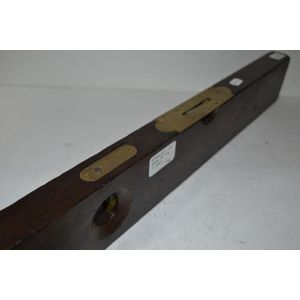Floral Gilded Glass Vases, 28 cm
You must be a subscriber, and be logged in to view price and dealer details.
Subscribe Now to view actual auction price for this item
When you subscribe, you have the option of setting the currency in which to display prices to $Au, $US, $NZ or Stg.
- Gilding - Gilding is a method of ornamentation whereby a thin sheet of gold metal is applied to items made of wood, leather, ceramics, glass and silver for decorative purposes.
For furniture including mirrors, the sheet of gold is usually applied over a coating of gesso. Gesso is a mixture of plaster of Paris and gypsum mixed with water and then applied to the carved wooden frames of mirrors and picture frames as a base for applying the gold leaf. After numerous coats of gesso have been applied, allowed to dry and then sanded a coat of "bole", a usually red coloured mixture of clay and glue is brushed on and allowed to dry, after which the gold leaf is applied. Over time parts of the gilding will rub off so the base colour can be seen. In water gilding, this was generally a blue colour, while in oil gilding, the under layer was often yellow. In Victorian times, gilders frequently used red as a pigment beneath the gold leaf.
Metal was often gilded by a process known as fire gilding. Gold mixed with mercury was applied and heated, causing the mercury to evaporate, the long-term effect of which was to kill or disable the craftsman or woman from mercury poisoning. The pursuit of beauty has claimed many victims, not the least of which were the artists who made those pieces so highly sought after today. - Overlay Glass - Overlay glass is coloured glass that has been created by sandwiching two or more layers of different coloured glass together. The layers are fused together through a process of heating and melting in a glass furnace, and the resulting glass has a unique colour and depth that is not found in single-layered glasses.
The technique of overlaying glass has been used for centuries, and was particularly popular in the Venetian glass industry during the Renaissance. Different colours of glass were layered to create intricate designs, and then the layers were carved and etched to create intricate patterns and details.
Visually similar items

Hermes, stainless steel 'Heure H' lady's wristwatch, Ref. HH1.210, case 2638470, c. 2000, quartz movement, 'H' shape case, white guilloche dial with Arabic numerals, with smooth orange calfskin double tour strap, case and dial signed, with original box and

Antique French wooden folding bottle rack, 149 cm high

Nanna Ditzel, collar necklace, model no. 129, for Georg Jensen, from the Archive collection, sterling silver, composed of a series of overlapping half-moon panels, stamped 'Georg Jensen 925 S 129', with original box, approx. Weight 270 grams

Stanley 1 1/2 inch type 2 spirit level
